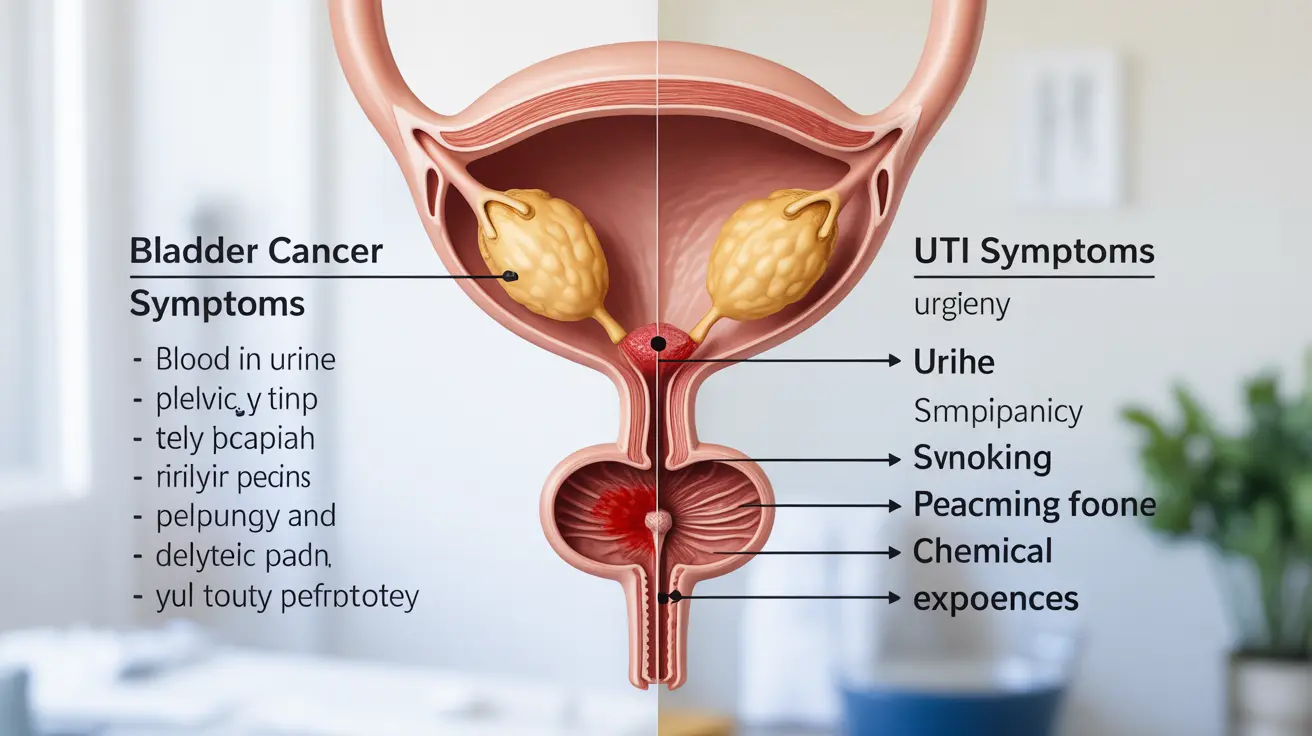Bladder cancer in females often presents with subtle symptoms that can be easily mistaken for other conditions. Understanding these warning signs is crucial for early detection and improved treatment outcomes. While less common in women than in men, bladder cancer requires particular attention due to its tendency to be diagnosed at later stages in female patients.
This comprehensive guide will help you understand the key signs to watch for, risk factors specific to women, and when to seek medical attention. Early recognition of symptoms can make a significant difference in prognosis and treatment options.
Key Early Warning Signs
The early signs of bladder cancer in females can be subtle but shouldn't be ignored. Common indicators include:
- Blood in the urine (hematuria), which may appear bright red, dark red, or cola-colored
- Frequent urination, especially at night
- Pain or burning sensation during urination
- Pelvic pain or pressure
- Lower back pain on one side
- Urgency to urinate even when the bladder isn't full
Distinguishing Bladder Cancer from UTIs
Many women initially mistake bladder cancer symptoms for a urinary tract infection (UTI). Key differences include:
- Blood in urine persists even after UTI treatment
- Symptoms don't resolve with antibiotics
- Pain may be less intense than with a UTI
- Symptoms tend to be more chronic and progressive
- Absence of fever (common in UTIs)
Risk Factors Specific to Women
Several factors can increase a woman's risk of developing bladder cancer:
- Smoking or exposure to secondhand smoke
- Chronic urinary tract infections
- Previous radiation therapy to the pelvic area
- Exposure to certain industrial chemicals
- Advanced age (most cases occur after age 55)
- Family history of bladder cancer
When to Seek Medical Attention
Women should consult a healthcare provider immediately if they experience:
- Any amount of blood in the urine
- Persistent urinary symptoms lasting more than two weeks
- Recurring UTIs that don't respond to antibiotics
- Unexplained pelvic pain or pressure
- Changes in bladder habits that don't resolve
Diagnostic Process and Testing
Diagnosis of bladder cancer typically involves several steps:
- Urinalysis and urine cytology
- Cystoscopy (examination of the bladder with a thin tube and camera)
- Imaging tests (CT urogram, MRI, or ultrasound)
- Biopsy of suspicious tissue
- Additional specialized tests based on individual cases
Frequently Asked Questions
What are the early signs of bladder cancer in females that I should watch for?
The earliest signs include blood in the urine (even if it only appears once), frequent urination, urgency to urinate, and pelvic pain. Any persistent changes in urinary habits should be evaluated by a healthcare provider.
How can I tell the difference between bladder cancer symptoms and a urinary tract infection?
While both conditions can cause similar symptoms, bladder cancer symptoms typically persist after antibiotic treatment and may not include fever. Blood in the urine with bladder cancer often occurs without pain and may come and go over time.
What are the main risk factors for developing bladder cancer in women?
The main risk factors include smoking, chronic UTIs, exposure to certain chemicals, previous pelvic radiation therapy, and family history. Age is also a significant factor, with most cases occurring in women over 55.
When should a woman see a doctor about blood in her urine or urinary changes?
Women should seek medical attention immediately if they notice any blood in their urine, experience persistent urinary symptoms lasting more than two weeks, or have recurring UTIs that don't respond to treatment.
How is bladder cancer diagnosed and what tests are used to confirm it in females?
Diagnosis typically begins with a urinalysis and may include urine cytology, cystoscopy, imaging studies (CT, MRI, or ultrasound), and possibly a biopsy. The specific combination of tests depends on individual symptoms and risk factors.




